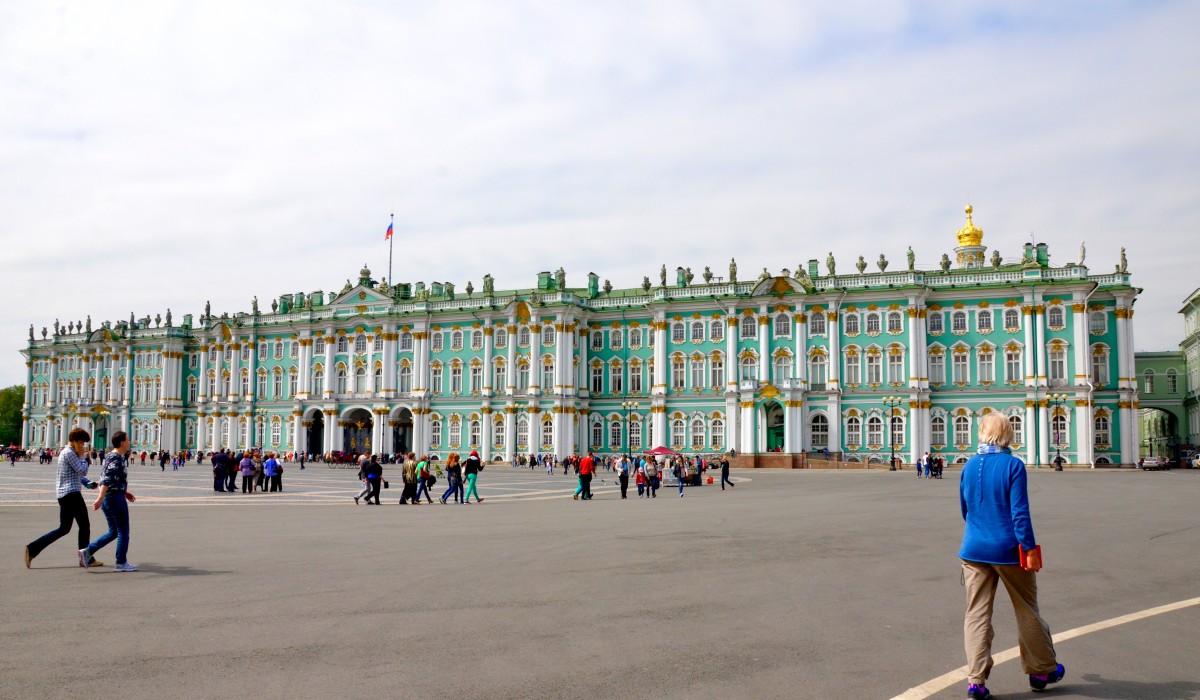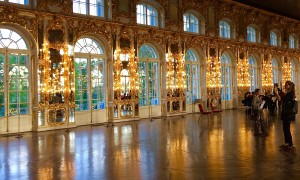
I did a blog post about the grandeur of St. Petersburg a couple of weeks ago. The city that Peter the Great established in 1600 is amazingly glamorous. Parks. Palaces. Gold and Gilt.
Big on the tourist trak is visiting the lavish palaces, but we we saw other views on our brief visit there last June. I’d like to share.
The reason Peter the Great moved the capital of his country from Moscow to what was a swamp was his desire to have a harbor and his fascination with shipbuilding.
All the royalty had to build new homes. Over time they were required to use the same colors—pale green, pink, blue and yellow and like in Paris, the height of the buildings were restricted. Alas, while it tries, it doesn’t have the fashion say or charm of Paris. But we surely saw the influence of the City of Light.
As we traveled into the city by boat we made our way through the shipping and boat building yards. Interesting to see in the early morning light.

I was fascinated with the onion domes on the many cathedrals. They stand out with their gold and blue and multi-colors. I was interested in the history of the onion domes and found this on the Ask the Historian web site.
“Onion domes are predominant in Russian architecture because they became an important stylistic component of Russian Orthodox church design. The dome’s importance comes from symbolic and technical aspects. Russian onion domes have complex symbolic associations, from the classic “vault of heaven” to their appearance as tongues of flame, recalling the holy spirit. On the technical side, you have the often repeated theory that the domes were an adaptation to the climate, especially Russia’s heavy snowfalls. The wooden construction of the onion dome would also have been a plus for Russian architects, as this material was in greater supply than the stone necessary for traditional, byzantine-style dome construction.”

We had a chance to take the subway—a modern transportation system 30 stories under ground. It was clean and well maintained. We also visited a market, shabby and sad. The people look like they live a really hard life. We learned that typically the markets were located by a church so the housewives could shop after attending a service.
One of the interesting experiences was the opportunity to visit a Russian family in their apartment. Ten us of us had tea and learned about life of the ordinary Russian people.I found it fascinating that our hostess, a woman in her late 50s or early 60’s said she’d prefer to be back under a strict Communist regime where “you knew what to expect.”
One of our younger guides didn’t agree with our more mature hostess. She explained, “When I was growing up we looked at travel the way you might look at going into space today. Know some people will probably do it but not likely. That’s all changing.”
Another young guide told me she didn’t think things were changed because of the revolution. “We still have mostly poor people and a few very very rich.” She lives in an apartment where three families share one small kitchen. Her words. “The revolution was a calamity.”
There were interesting sights on the streets. Something that surprised me were the canals…..we took a boat ride on one and enjoyed seeing the city from the water, including this “repurposing” of an old lighthouse. Rather odd, don’t you think?




























Comments
4 CommentsBarb Rohwer
Oct 12, 2015Great photos Susan. Brings back pleasant memories!
Susan J. Smith
Oct 13, 2015Thanks, Barb
It is an interesting city of contrasts, isn’t it?
Kathy
Oct 13, 2015What a great way to get the perspective of the people, by having tea with the Russian family. Your pictures are magnificent!
Susan J. Smith
Oct 13, 2015Thank you Kathy,
I really enjoyed the opportunity to meet several Russians in their apartments. It was great to be able to speak with an interpreter and ask questions about their lives. They were very welcoming.